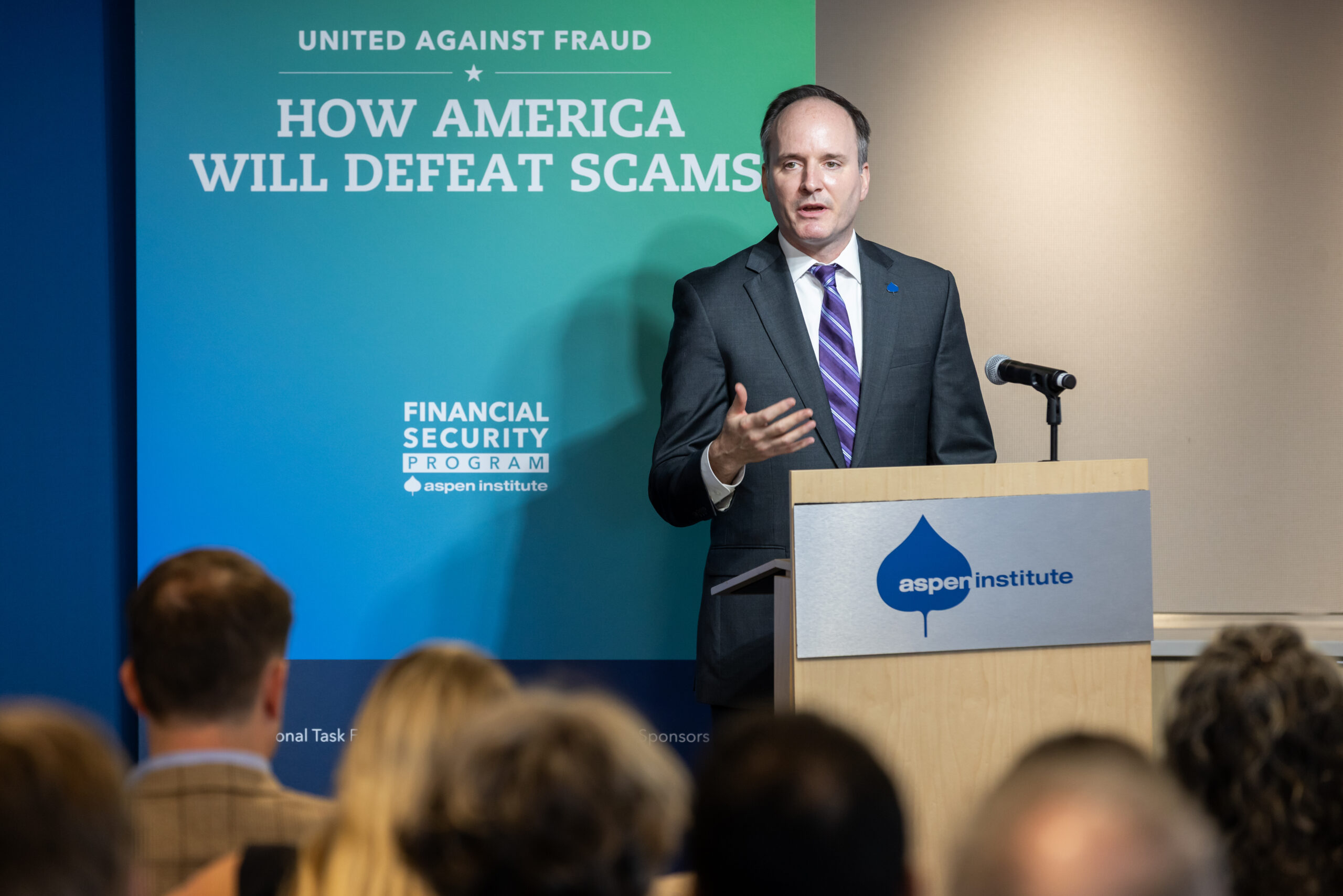How the Fed goes beyond the data to try to make the economy work for everyone


By Dr. Raphael W. Bostic
The nation’s always-fluid labor market has been especially unpredictable since the COVID-19 pandemic.
To recap: The economy lost 22 million jobs in early 2020, essentially wiping out the post-Great Recession labor market recovery in two months. A year later, circumstances completely reversed, as employers scrambled to find workers to fill record numbers of openings as population growth slowed and retirements surged.
Today, the labor market is broadly healthy. Unemployment remains near all-time lows, monthly job growth is robust, labor force participation among prime-age (25- to 54-year-old) workers is above prepandemic levels, and wage increases have outpaced inflation for many months.
That’s the big picture. But as monetary policymakers at the Federal Reserve, we must fill in the details. If the pandemic taught me nothing else, it demonstrated that what we think we know can change almost overnight.
That’s the big picture. But as monetary policymakers at the Federal Reserve, we must fill in the details. If the pandemic taught me nothing else, it demonstrated that what we think we know can change almost overnight.
Before I go further, please understand that I’m sharing my thoughts alone. I do not speak for colleagues at the Federal Open Market Committee or the Atlanta Fed.
At the Federal Reserve, our dual mandate is to pursue price stability and maximum employment. I like to think of it as maximum sustainable employment, a state in which all Americans can maximize their human capital and find work that puts their skills to their highest and best use.
In an extraordinary labor market, it’s especially important to dig beneath the aggregate data, as essential as that information is. Digging beneath the data includes going directly to employers and workers to learn how they are experiencing today’s labor market.
Think of it this way: Just as the macroeconomy is a combination of many diverse smaller economies, the labor market is the product of millions of interactions among employees and employers. To understand workers’ experiences, we talk to real people.
An example I will discuss here is the Worker Voices project, a Federal Reserve System-wide effort focused on some of those hit hardest by the COVID-19 pandemic. The project grew from conversations among Fed workforce development experts about growing labor shortages and a narrative that took hold in 2021 that questioned why many workers were not returning to jobs as the economy reopened.
All 12 Reserve Banks became involved, and we conducted 20 focus groups over several months in 2022 as the labor market recovery was in full swing. We asked workers a few basic questions: What was your experience with employment at the onset of the pandemic and through the economic recovery? Did those experiences influence how you think about and pursue employment now? How have your expectations around employment shifted, if at all?
We learned that even amid the labor shortage, numerous workers expressed frustration with how potential employers responded to job applications and arranged interviews despite their efforts to lower barriers to openings. We also heard about the financial insecurity born of job instability and the effects on the health and well-being of families. On the other hand, participants in the project also told us that they plan to seek agency and stability in future job searches rather than simply settling for the first offer they get.
As the labor market evolved, our Atlanta Fed team and our colleagues across the Fed System explored how we might gather more data from a broader group of workers and job seekers than those we had interviewed for Worker Voices. That led us to a partnership with the SkillUp Coalition, a national nonprofit that helps people without college degrees prepare for and find good jobs.
SkillUp regularly surveys its participants to understand their job market needs. Through our partnership, we asked survey questions about topics including household budgets, what workers want from new jobs, and their general job market outlook. These questions help us understand worker sentiment and confidence, insights valuable to monetary policy analysis.
I’ve been particularly alert to the SkillUp survey respondents’ sentiments about household budgets. Many said their ability to manage their finances and their confidence in landing a job were improving at the beginning of 2024. For example, in the most recent surveys we did with SkillUp, workers expressed broad optimism about their job prospects.
Such findings represent exactly the kind of nuance we aim to tease out with projects like Worker Voices.
Still, I have learned that gathering information alone is not enough. The real value comes from using it to inform research and outreach, and we’re always trying to do that better.
Still, I have learned that gathering information alone is not enough. The real value comes from using it to inform research and outreach, and we’re always trying to do that better.
Why? First, workers’ views provide a more holistic view of how people feel about the economy and thus add important nuance to monetary policy discussions. Given the uncertainty of the pandemic, conditions can change so quickly—often before showing up in the data—that I can’t imagine not using anecdotal reports from employees and employers in our policy formulations at the Atlanta Fed.
To be sure, the specific findings from the Worker Voices project are still relatively new. We intend to continue harvesting qualitative and quantitative data in future phases of the project. We hope to use this information as grist for research to deepen our understanding of cyclical and structural changes in workers’ labor market behavior.
Blending these kinds of on-the-ground findings with aggregate data is not a new undertaking for the Atlanta Fed. Anecdotal reports from business and community leaders from our Regional Economic Information Network have enriched our policy discussions for nearly two decades. Further, we know how qualitative research can help seed deeper study and eventually yield tools for those on the front lines of promoting economic inclusion. To cite a prominent example, the Atlanta Fed has built an enterprise I am extremely proud of called Advancing Careers for Low-Income Families.
Advancing Careers evolved out of listening to families and career counselors and from research showing that benefits cliffs constitute barriers to economic mobility by hindering low- and moderate-income workers trying to ascend a career ladder.
Benefits cliffs happen when a wage earner who receives multiple public benefits—SNAP, Medicaid, and so on—earns more money at work but comes out less well off because they exceed income-eligibility thresholds for some or all the benefits and thus lose access. Basically, someone might earn an extra dollar but lose $3 or $4 in public benefits.
Not surprisingly, then, benefits cliffs can discourage lower-wage earners from gaining skills or taking better-paying jobs because it often takes years for the additional income to overcome the lost benefits. And during those years a family might lose access to necessities including sufficient food, shelter, childcare, and health care.
Our Advancing Careers for Low-Income Families team developed a suite of analytical tools used by workforce development agencies, human service organizations, and others across the country to help people navigate cliffs and in fact move up career ladders and earn family-supporting incomes.
I want to highlight the tangible value of this work with a story about how the Advancing Careers tools informed two new laws aimed at helping Floridians surmount benefits cliffs. First, though, another disclaimer: The Federal Reserve does not lobby for legislation. We offer policymakers and practitioners independent data and intelligence.
In this case, Florida’s legislature unanimously passed a law in 2023 expanding eligibility standards for a children’s health insurance program. Under the new statute, families can earn more money and still qualify for the program—up to 300 percent of federal poverty-level income, up from the previous threshold of 200 percent.
The Advancing Careers analytical tools clarified that the original design of the health insurance program gave rise to benefits cliffs, severe ones in certain cases. For some families, the old income cutoff meant a modest pay raise could send their insurance premiums soaring from $240 to over $3,000 a year.
In this year’s legislative session, Florida passed another law that requires local workforce agencies to use tools with their clients that clearly illustrate the financial impact of changes to income and public assistance. Legislative staff cited Atlanta Fed research in their analysis, and nonprofit partners in Florida anticipate using our CLIFF tools to satisfy this requirement. The measure includes language and funding to address a cliff that for many families blocks access to desperately needed subsidized childcare.
I’ve described a couple of examples of how the Federal Reserve Bank of Atlanta’s work—informed by reaching beyond the aggregate data and hearing directly from workers and families—is shining a light on barriers that limit the economic prospects of too many of our neighbors, which in turn limits prospects for the macroeconomy. This is what we mean when we talk about doing our part to build an economy that works for everyone.
The views expressed here are those of the author and do not necessarily reflect the views of the Federal Reserve Bank of Atlanta, the Federal Reserve System, or Fed Communities.

Stifel Financial recently paid an additional $850,000 to settle another arbitration claim against the firm related to a former broker’s...

Graduate PLUS loans will no longer be available to new borrowers starting July 1, 2026. Parents and graduate students will...

Throughout his career spanning financial services, technology, and policy, Nick Bourke has focused his efforts first and foremost on protecting...